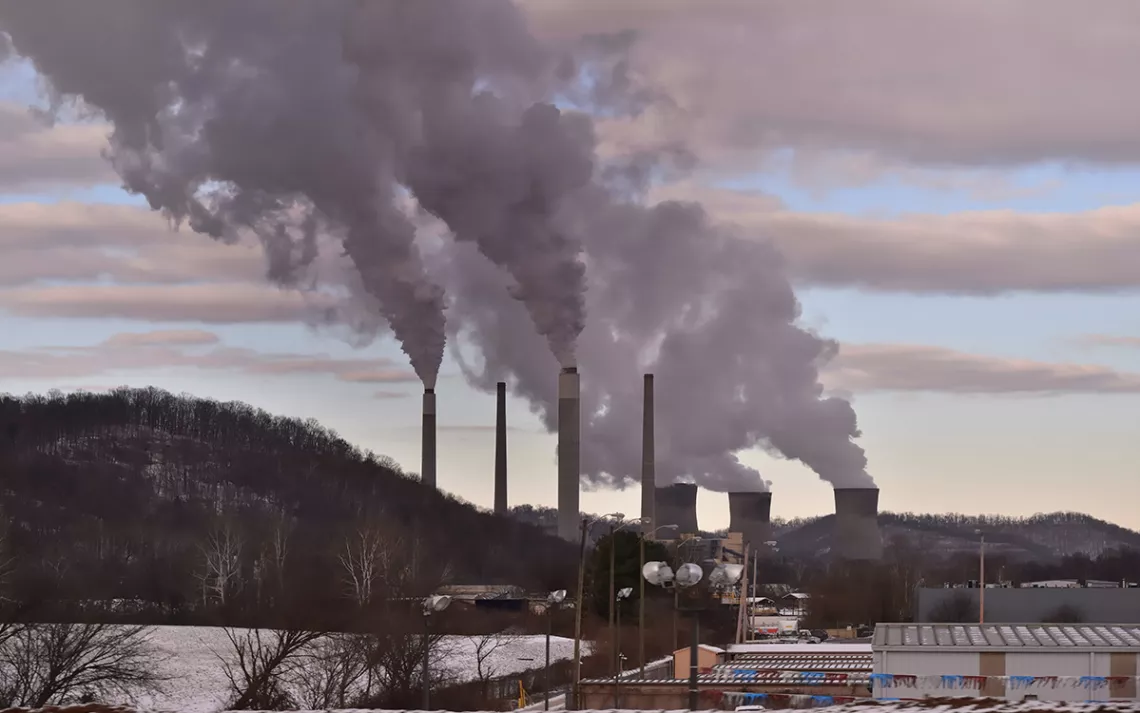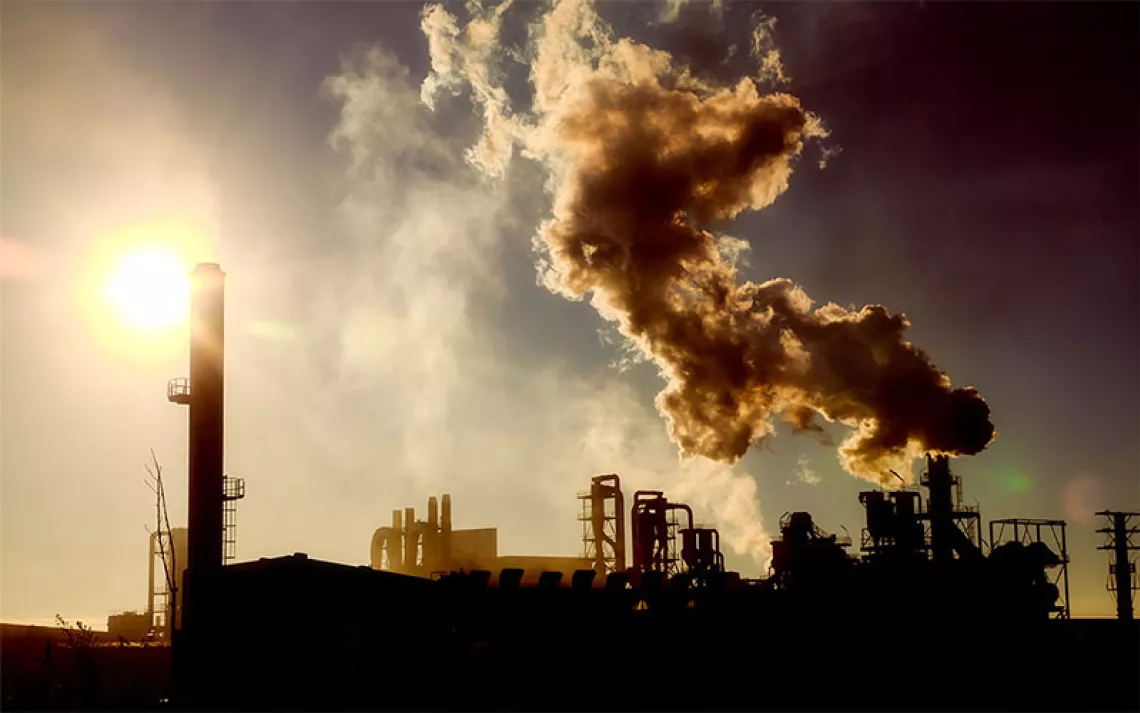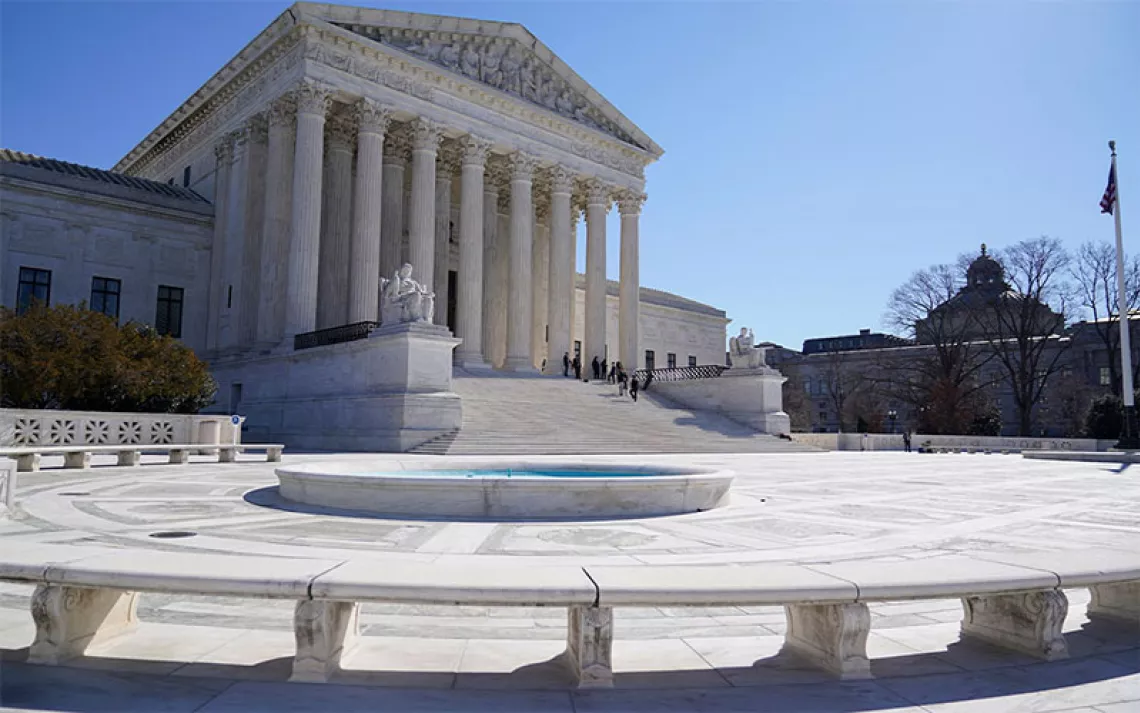The Biden Administration Moves to Slash Carbon Pollution From Power Plants
Guidelines were crafted to pass Supreme Court review, but hurdles remain

Photo by Joesboy/iStock
The Environmental Protection Agency today proposed new rules to cut carbon pollution from coal- and gas-fired power plants, the nation’s second-largest source of greenhouse gases. If finalized as is, the EPA rules would require CO2 emission reductions of up to 90 percent from existing coal-fired electrical generating stations by 2032. It would also establish tighter CO2 standards for new gas-fired power plants and limits for certain existing gas units as well. The proposal comes one month after the agency released regulations to slash CO2 emissions from the transportation sector (primarily cars and trucks), the number one emitter of CO2.
“The public health and environmental benefits of this proposed rule will be tremendous,” EPA administrator Michael Regan said. “And we have more than enough reason to be optimistic about what's possible for the future of our nation.”
Many environmental organizations applauded the EPA proposal. “These would be the first really meaningful federal CO2 limits for new gas plants,” said Andres Restrepo, senior attorney with the Sierra Club’s Environmental Law Program. “And they would be the first, period, for existing coal and gas plants.”
Together, the proposed rules could go a long way to fulfilling the Biden administration’s goal of achieving a net-zero emissions economy by 2050. EPA’s proposal will likely face strong opposition by fossil fuel industries and their allies in Congress and in state government. Once it’s finalized, the rule may also eventually face the Supreme Court, which in 2022 ruled that an Obama-era plan to cut power plant emissions violated the Clean Air Act, a decision that was widely criticized for judicial overreach. But environmental policy experts expressed optimism that the Biden administration has crafted a set of rules that will withstand Supreme Court scrutiny.
“I think it would be much harder for even this Supreme Court to rule against EPA this time,” said Jennifer Rushlow, a professor at the Vermont School of Law and dean of the Vermont School for the Environment. That’s because the new rules were tailored to accommodate the court’s earlier objections, according to Rushlow. “The Obama administration’s Clean Power Plan was struck down because EPA explicitly said that one of the options for reducing emissions was closing coal- or gas-fired plants and investing in renewable energy sources instead.”
The new EPA proposal doesn’t mention switching to renewable power sources like wind or solar. Instead, it sets emission limits that power plants can reach using technologies that can be applied at each plant to reduce its emissions. “They're very clearly trying to thread the needle,” Rushlow said, “and it seems like they've done a good job.”
While EPA will set CO2 standards for existing coal-fired power plants as well as the largest and most frequently used gas-fired plants, individual states can decide how those plants should achieve the federal guidelines. If a state chooses not to participate in the program, EPA will establish a federal plan for that state’s existing plants.
The EPA’s rule also established tightened CO2 standards for new power plants that burn methane gas (also known as “natural gas”). The agency first set CO2 limits for new gas units in 2015, but those standards were too weak and haven’t driven significant emissions reductions. Those standards are critical because of the role that new gas units could play in the nation’s energy-generation mix over the next decade. Unlike with the existing source standards, states will have no role in implementing this new source component.
“These would be the first really meaningful federal CO2 limits for new gas plants. And they would be the first, period, for existing coal plants.”
The specific standards for power plant emission cuts are calculated using what’s known as the “Best System of Emission Reduction” or BSER. Here, the EPA has selected three technologies as the BSER (although which technologies apply to which kind of plant in the EPA’s rule is complicated). The first is known as carbon capture and sequestration (CCS), a method long touted by utilities as a way to reduce CO2 while still burning fossil fuels but frequently criticized by environmentalists as a decidedly inferior option to switching to renewables. The second is co-firing a percentage methane gas in coal plants, which reduces those units’ emission rate. The third is co-firing a percentage of hydrogen gas in plants that normally burn methane gas. Because hydrogen emits no CO2 when combusted, this practice also reduces the average emission rate of the unit.
According to the EPA, the proposed regulations were crafted to avoid a “one size fits all” regulation. For example, existing coal-fired plants that will continue operating after 2040 will have to meet a 90 percent CO2 emissions reduction by 2030. Plants that agree to close before 2032 will be allowed to run at their current emission rate until retirement. Those same units can extend their operating lives to 2035 if they also agree to limit their operations to just 20 percent of full capacity. And any coal-fired units that don’t fit into those categories will be required to meet emission standards equivalent to co-firing with 40 percent methane gas starting in 2030.
The EPA is required to set standards that can be met with technologies that are economically feasible for utilities. With regard to CCS, regulators believe they have that criterion covered thanks, in part, to tax credits for utilities that capture carbon, incentives that were included in last year’s Inflation Reduction Act. The Department of Energy has, separately, poured billions of dollars into developing CCS, including $2.54 billion in 2022 alone.
Although no commercial-scale power plants in the United States currently employ the technology, many utilities have suggested that they will make ample use of these federal financial incentives going forward. “The industry is all saying that CCS is what they want to do,” Sierra Club’s Restrepo explained. “If they claim that this is the technology that’s going to save them, then they really can’t argue that it’s not available.”
Co-firing methane with hydrogen gas has its own challenges, said Restrepo. “When you burn hydrogen, it produces zero CO2. But there are different ways of producing it that have very different impacts.” For example, hydrogen can be produced from methane, but the process releases GHGs. The cleanest form of hydrogen production is made from water, by separating hydrogen from oxygen atoms using electricity generated by renewable sources like wind or solar. No GHGs are emitted from producing this “green hydrogen.”
EPA’s rule would most likely require the use of green hydrogen for sources pursuing that option. However, as Restrepo points out, “You use more electricity to create green hydrogen than you get when you burn the hydrogen in the power plant. So the obvious question is, Why don’t you just use the renewable energy in the first place? Just put it onto the grid.” For this reason, although Sierra Club supports EPA’s standards, it plans to urge utilities to simply switch to renewables rather than pursue hydrogen-based (or CCS-based) compliance strategies.
Another concern with regard to both CCS and green hydrogen is also the largest incentive for utilities to use them: They can extend the life of existing coal power plants. The downside is equally obvious: Those plants release pollutants that cause serious health problems in frontline communities, which are disproportionately Black, Latino, and Indigenous.
For that reason, in 2021 the Center for International Environmental Law issued an open letter to leaders in the United States and Canada signed by more than 500 organizations, calling on them to end support for CCS. In announcing his organization’s decision to sign on, Tom Goldtooth, executive director of the Indigenous Environmental Network, said, “Billions of dollars for carbon capture essentially redirects money away from renewable energy like solar and wind. We do not have time and money to waste on more questionable carbon capture infrastructure.”
Restrepo pointed out one critically important detail of the rule: Sources have other compliance options beyond CCS and hydrogen. Utilities can choose to retire their existing plants early or accept certain limits on their operational capacity in order to avoid installing CCS. As for new units, they can simply choose not to build those plants, and instead increase their renewable portfolios.
In fact, EPA’s modeling shows that far more plants will retire or reduce their utilization rather than install CCS or hydrogen. For that reason, EPA found that in addition to reducing CO2, the new rule would “yield significant reductions” in a host of other pollutants, including particulates, sulfur dioxide, and nitrogen dioxide. The agency calculates that these reductions will avoid 1,300 premature deaths in 2030 alone.
The new EPA emissions standards face a complex set of next steps. First there will be a comment period during which the standards will likely be attacked by the fossil fuel industry for being too strong and by environmentalists for being too weak. After that, the agency will likely modify the standards in response to this feedback as well as its own further analysis. Once the rule is finalized, Congress has 60 days under the Congressional Review Act to rescind it with a simple majority in both houses (something it recently did in the case of emissions standards for heavy-duty trucks). President Biden could get around congressional disapproval by vetoing their rescission, though. The standards would then almost certainly be subject to lawsuits as soon as they are finalized, which could ultimately reach the Supreme Court.
If the proposed EPA standards clear all those hurdles, it will be a significant victory in the battle to reduce greenhouse gases, says Vermont Law School’s Rushlow. Utilities could install CCS or burn hydrogen, or they could choose to retire their fossil plants early, run them less, or simply not build new ones at all. “It’s already becoming a kind of slow death for fossil fuel plants,” she said. “This may make renewables more attractive.”
This article has been modified and updated since its original publication.
 The Magazine of The Sierra Club
The Magazine of The Sierra Club







